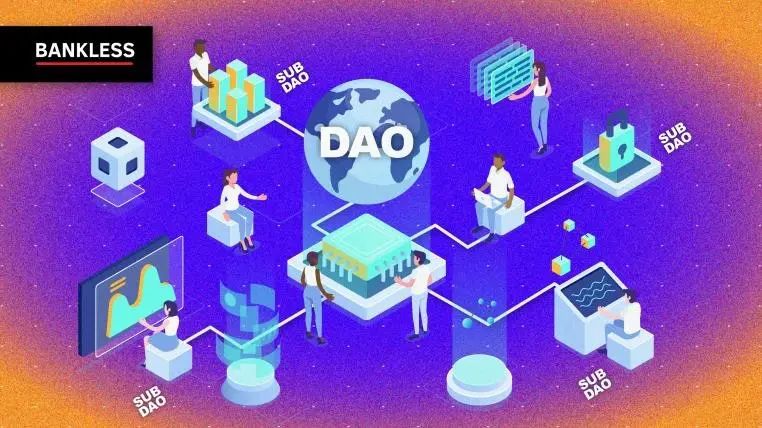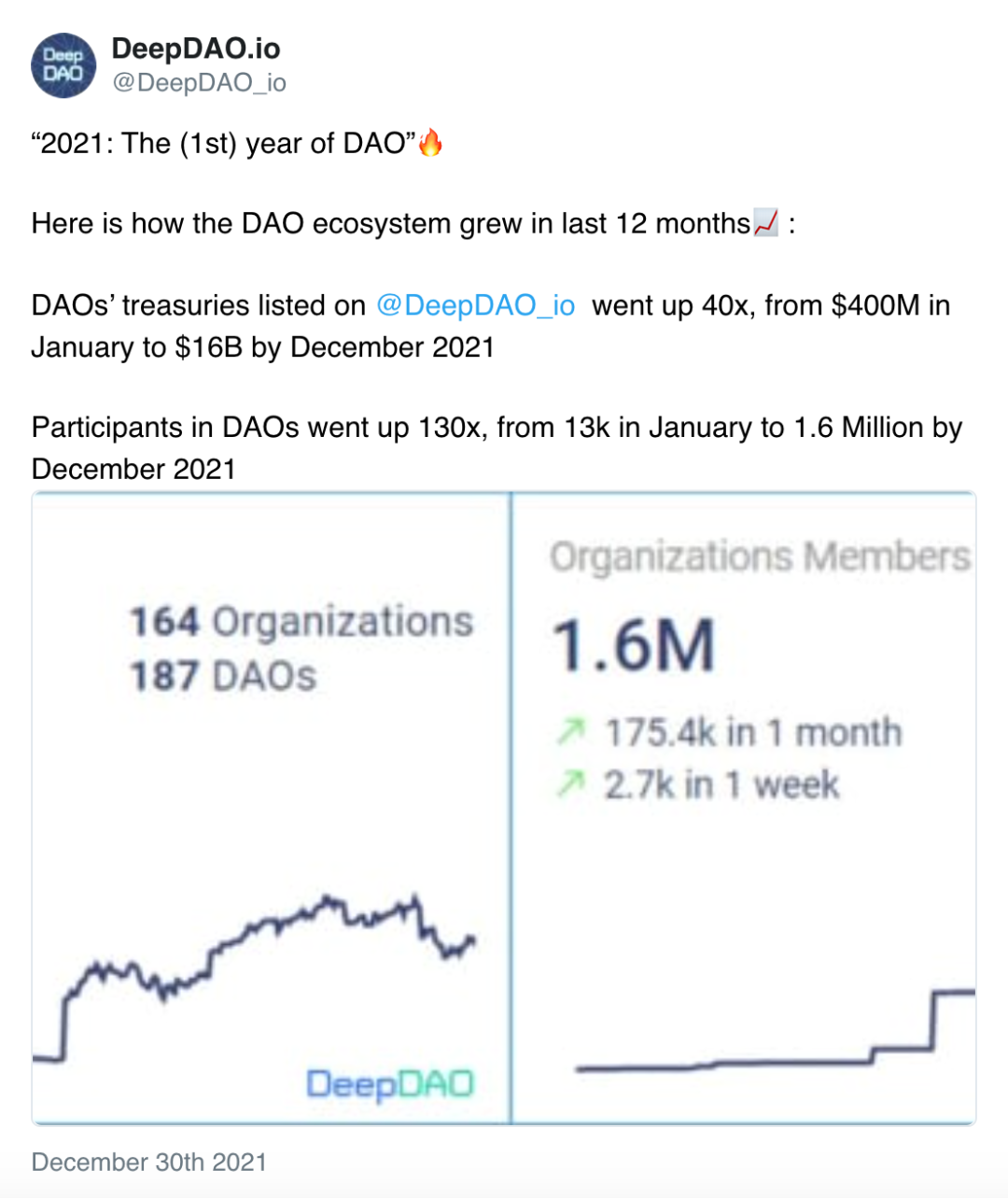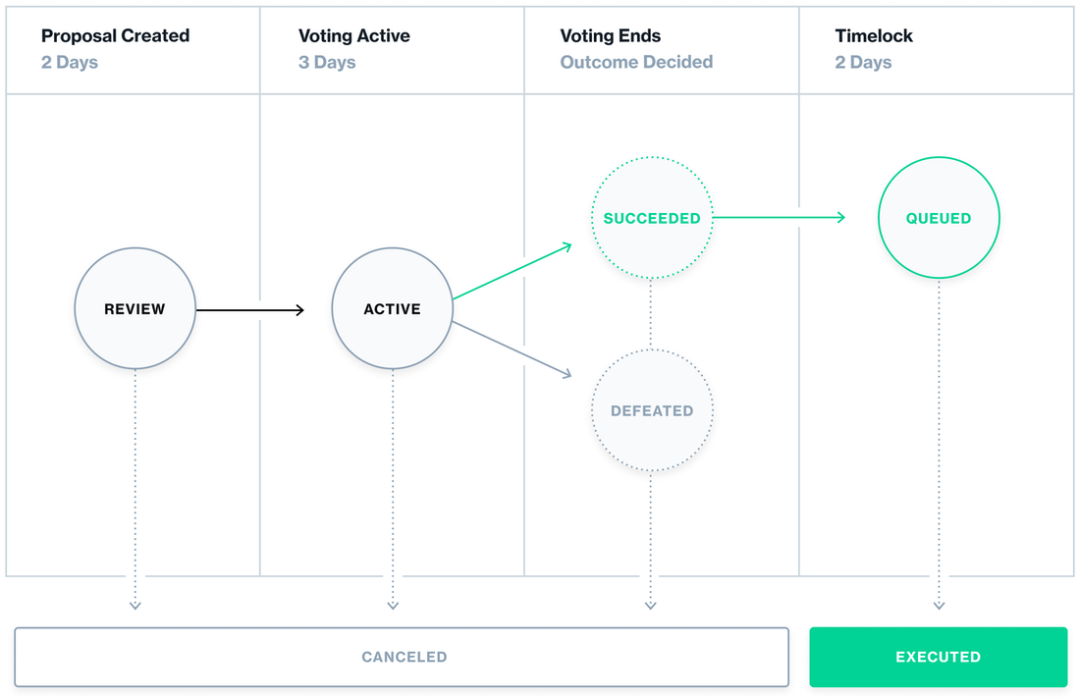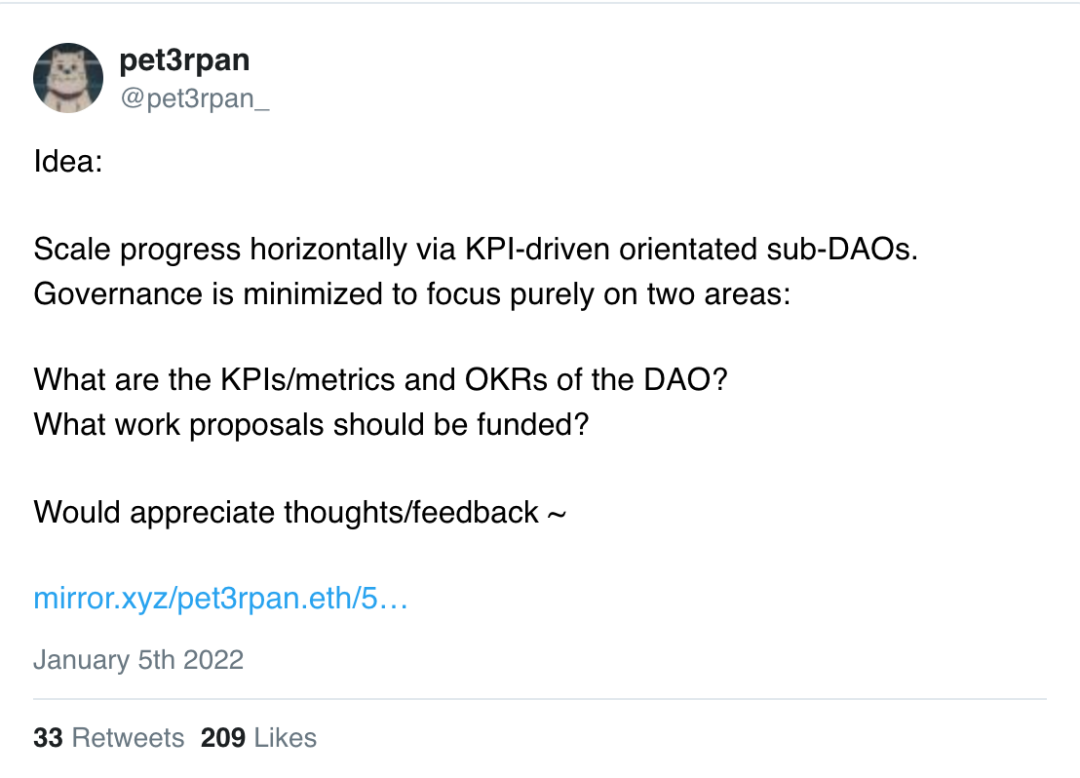Understand the concepts and features of subDAO
去中心化 Self-government organizations (DAO) have exploded in popularity over the past year.
They have grown from niche projects with only a few contributors to Big Macs with billions of dollars and thousands of enthusiastic community members, all of whom are working hard to achieve their mission.
We are beginning to see these new forms of social structures fulfil their potential as a way of working in the future. Anyone anywhere can join the DAO and start getting paid.
Recently, we have seen the rise of subDAO, which is within a broader DAO, smaller, autonomous workgroups and projects. We believe these are ways for the DAO to scale up without burdening the community with bureaucracy.
DAO is already a major experiment in cryptocurrency, but subDAO is a very new field in DAO field.
Fortunately, we got a great opportunity to learn about subDAO through BanklessDAO.
Frogmonkee, our Aboriginal and core contributor to BanklessDAO, dissects what we have learned so far about subDAO.
For those in the DAO rabbit hole, this is an introductory lesson.
Let's discuss it.
- RSA

2021 is a big year for cryptocurrency.
In the whole field, we have seen the adoption of heterogeneous tokens (NFT), decentralized finance (DeFi), counterfeit currency Layer 1 network (Alt-L1), Layer 2 network (L2) and DAO.
The DAO's Treasury grew 40-fold from 16 billion, while its participation swelled from 13,000 to 1.6 million, according to DeepDAO, an analysis platform focused on DAO.

2021: It is the first year of DAO. "The following in 🔥 is the development of DAO ecosystem in the past 12 months in 📈. DAO's Treasury, which went online at\ @ DeepDAO_io, grew 40-fold, from 16 billion in December 2021. The number of DAO participants increased 130-fold, from 13,000 in January to 1.6 million in December 2021.
With such attention, DAO has achieved an inflection point in its development. In adapting to the growing pressures of new ideas, new contributors, and new funding, ** DAO needs to expand its coordination capabilities and make the best use of newly discovered interests **.
First of all, we should realize that the conversion cost of DAO is almost zero.
In a traditional company, you have to go through an extensive recruitment process to get a salaried position with benefits. In DAO, this does not happen very often. In many cases, you can simply join a Discord server and start offering value and getting paid.
In this way, DAO is very suitable for low-risk experiments. People join DAO, come up with ideas, organize teams, get funding, and execute in a relatively autonomous way. But once there is bureaucratic red tape, people leave and take their ideas elsewhere, and the DAO loses talent.
To capture the value of new ideas, the DAO has been experimenting with the concept of ** Sub-DAO **, a way to allow ** Super DAO ** (also known as parentDAO) to localize experiments with sufficient autonomy, while keeping them financially and relationships aligned with superDAO.
With the superDAO and subDAO experiments, we need to learn how to:
Experiment in supporting new ideas by measuring the return on investment.
Make subDAO economically aligned with superDAO in order to create new value and capture it at the same time.
Template the schemas of various subDAOs and define their ownership structure and relationship with superDAO, because not all subDAOs are the same.
So what exactly is subDAO?
The definition, classification, and conceptualization of _ subDAO is an evolving area of discussion. The following content is just my opinion and the psychological model I formed. Of course, they are likely to change at any time. _
As companies grow, they add new departments, products, business verticals, teams, and initiatives to the organization. subDAO is like these new organizational structures, except that it does not follow the hierarchical management mode, and subDAO operates completely autonomously while being consistent with superDAO. They are more like affiliate relationships.
Let's take a closer look at this sentence: ** subDAO operates in a fully autonomous manner while being consistent with superDAO **.
** Autonomy **
Let's first discuss the on-chain part of subDAO.
Generally speaking, DAO exists in a range. Some "DAOs" are rather immature, and they are composed of the smallest chain capabilities, which are mainly coordinated at the social level.
In a previous article, Lucas referred to these structures as minimum feasible DAOs:
Create a task (this part is open!) .
Build a community with Collab Land on Discord or Telegram
Create a shared finance ministry with Gnosis Multisig
Building a Governance Framework with Snapshot
Use Mirror or Coinvise to assign ownership
At the other end, protocols like Uniswap and Compound, DAO, have rather complex on-chain governance frameworks, such as Governor Bravo.

Governance framework for _ Compound Finance--Note how voting decisions are automatically queued as transactions, rather than being manually executed like human-operated multi-signatures. _
Like DAO, subDAO also exists in this scope.
Their complexity depends on their maturity and the need for decentralization. subDAO is centralized at first, but it will gradually decentralize over time, which is a good thing.
At the very least, subDAO is a multi-signature with social governance. However, they can do more.
** Consistency **
Consistency refers to the relationship and interface between subDAO and its superDAO. What is the mutually beneficial relationship between subDAO and superDAO, and can it catalyze the generation of new subDAO?
This can be broken down into two important levers: economic alliance and relationship alliance.
** Economic consistency: ** How close are the economic incentives between superDAO and subDAO? (e.g. token exchange, revenue sharing, repurchase)
** Relationship consistency: ** What intangible benefits does subDAO get from superDAO, and vice versa? (e.g. branding, promotion, acquiring fresh talent)
Earlier, I mentioned that not all subDAO are the same. I mean, subDAO will be different in terms of consistency with superDAO, depending on what their economic and relationship agreements look like.
Take the following situations as examples:
The BanklessDAO Writers' Association pays for labor in the form of BANK (BanklessDAO's token) and receives all funds from the BanklessDAO Treasury Department. If the Writers' Association is inconsistent with BanklessDAO, it can cut off or misappropriate the funds. (Most consistent with BanklessDAO)
Bankless Brazil is not funded by BanklessDAO, but still uses BANK tokens in exchange for formal recognition and brand authorization.
Bankless Consulting pays BanklessDAO a tax of 10% on all income in exchange for direct access to the professional labor force included in each BanklessDAO guild.
DAO Dash agreed to issue their own tokens and send 33% of its supply to BanklessDAO's Treasury in exchange for initial capital and inclusion in its product suite. (Most inconsistent with BanklessDAO)
The point here is that subDAO and superDAO will interface differently depending on their intended purpose. For example, an internal-oriented subDAO, such as a guild, may have a stronger connection with superDAO, while an external-oriented subDAO, such as a revenue-generating plan, may have a looser connection with superDAO.
It should be noted that. superDAO determines these relationships before the number of subDAO has swelled out of control. Without some form of standardization, superDAO is likely to spin off teams that create a lot of value and have no way to capture it back.
** Accountability **
The last important link in this subDAO psychological model is accountability. As highlighted in the tuning section above, the value provided by subDAO and superDAO is highly correlated with each other. Sometimes, these relationships become one-sided, and one party gains more value than the other.
More commonly, this happens when subDAO becomes the financial burden of superDAO without a clear return on investment. After all, many subDAOs are funded by superDAO in the first place. When this happens, superDAO must have a clear way to reduce its losses. Without a clear approach, ending a subDAO will inevitably become chaotic and set a bad precedent.
Pet3rpan and James Young have written a good blog post on this topic.

Some ideas: scale out through KPI-oriented subDAO. Governance is minimized, and we need to focus on two areas: What are the KPI/metrics and OKR of DAO? Which work proposals should be funded? I hope to have more ideas/feedback. mirror.xyz/pet3rpan. eth/5...
In his description, he emphasized the need for funding and support to be linked to KPI and OKR. In other words, in order to maintain the relationship between subDAO and superDAO, there should be tangible progress in creating value.
This is a good model for holding subDAO accountable for fulfilling their commitments to superDAO, while also allowing superDAO to make wise judgments about any continued support for subDAO.
The future of subDAO
When I write this article, I realize that we know subDAO very early. The DAO itself is still in the process of evolving, not to mention the introduction of complex sub-classifications.
In our Bankless 2022 Forecast article, I wrote:
DAO is the simplest way for people to participate in cryptocurrency with low risk (the cost is only time). With the continuous development of instrumentalization, induction and compensation, DAO will take off in 2022. But that doesn't necessarily mean their tokens will skyrocket.
I want to adjust this forecast. I think 2022 will be a year for subDAO.
Before being forced to introduce bureaucracy, the DAO could only reach such a large scale. All new talents and ideas need to flow to an outlet.
This exit will be subDAO.



评论区